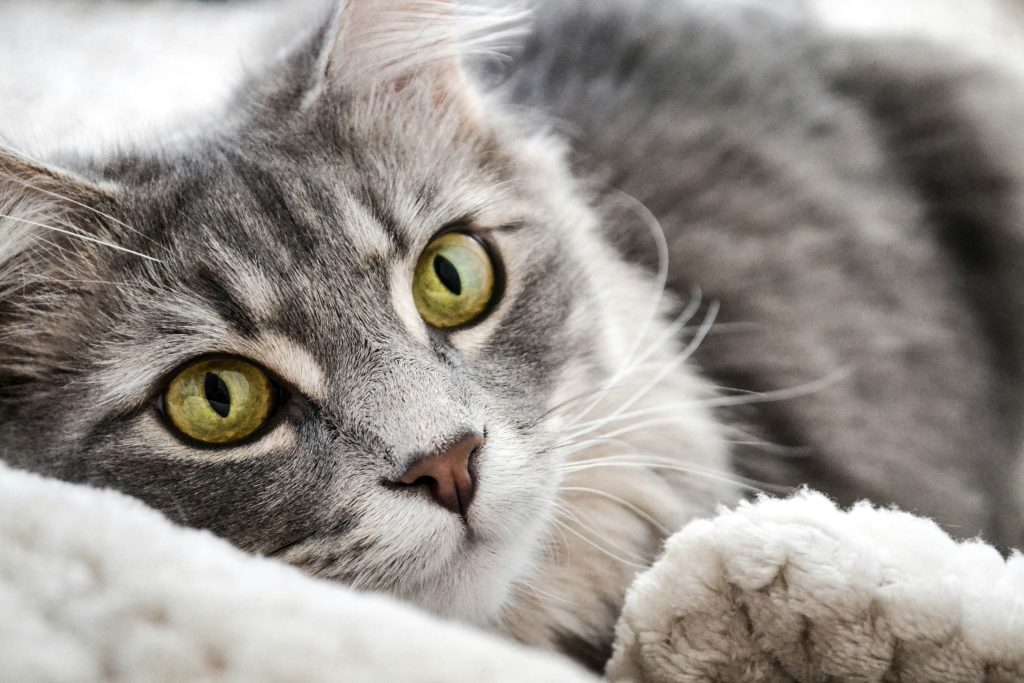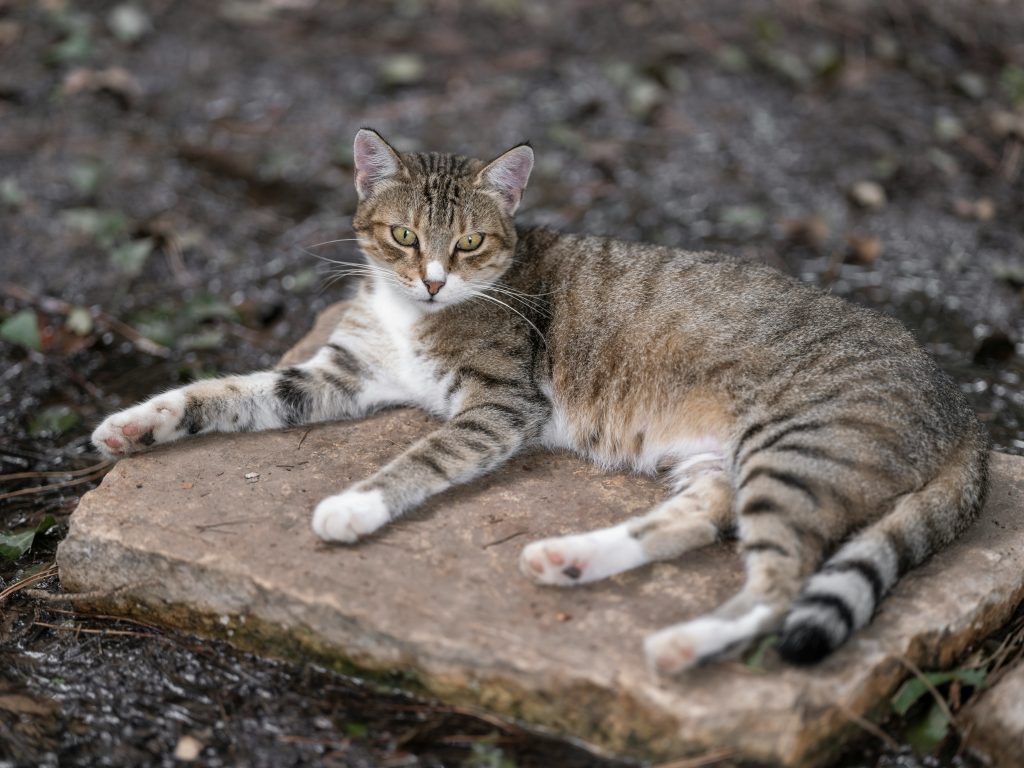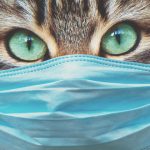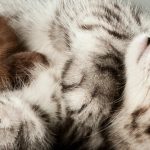Table of Contents
Observing a panting cat can be startling since panting in cats is not as common as in dogs. While panting can sometimes be normal after vigorous play or on a hot day, it often indicates an underlying issue, such as respiratory distress or heart disease. Cats might also pant due to stress or if they are in pain. Monitoring your cat’s panting and recognizing when panting is abnormal is critical to keeping your cat safe and healthy.
Understanding why your cat is panting is the first step towards ensuring their well-being. Continue reading our comprehensive guide to cat health for more insights on how to help your panting cat and when to seek emergency veterinary care.
Recognizing Abnormal Panting in Cats
While cats occasionally pant when tired from exercise, labored breathing that continues or occurs without an apparent reason could signal a need for emergency veterinary attention. It’s vital to differentiate between normal and abnormal panting to protect your cat’s health.
Identifying Unusual Panting Patterns
As a cat owner, it’s essential to identify when panting in cats deviates from the norm. A cat breathing heavily at rest or panting with a change in rhythm or sound could indicate a severe health concern requiring prompt attention.
The Interplay Between Panting and Behavioral Changes
When your cat is breathing heavily, look for accompanying behavioral changes. These can be subtle but may provide clues about the underlying cause of the panting.
Stress-Induced Panting in Felines
Cats can experience stress from environmental changes, new pets, or loud noises, which can lead to rapid breathing or panting. To help your cat relax, it’s essential to create a calm environment and address the stressors.
Panting as a Sign of Pain or Discomfort
If your cat is panting and showing signs of discomfort, such as reluctance to move or a change in posture, it could indicate that it is in pain. Immediate evaluation by a veterinarian is warranted to address the source of pain.

The Medical Perspective: When Panting Signals Health Issues
Panting can be a symptom of various cat health issues, from respiratory illnesses to heart disease. Timely medical evaluation is essential to address these conditions effectively.
Respiratory Distress and Its Causes in Cats
Respiratory distress in cats can arise from conditions such as kidney disease. Recognizing changes in body language and breathing patterns is crucial for early intervention.
Asthma in Cats: Understanding the Wheeze
Feline asthma causes chronic inflammation of the lungs, leading to breathing problems and often manifesting as a wheezing sound during exhalation. Managing asthma requires a veterinary diagnosis and treatment plan.
The Threat of Heartworm and Heart Conditions
Rapid breathing can be a symptom of heartworm-associated respiratory disease, where excess fluid and dilated blood vessels impede normal breathing and panting. Preventative care and timely treatment are crucial to managing these conditions.
The Silent Enemy: Recognizing Heart Failure Symptoms
Excess fluid in the lungs can cause cats to breathe more laboriously. Recognizing the signs of congestive heart failure, such as rapid breathing and panting, is crucial for treating and managing the condition.
When an Inhaled Object Causes Respiratory Concerns
If you suspect your cat has inhaled a foreign object, it can lead to respiratory illnesses and make it difficult for your cat to breathe. Secondary bacterial infections may complicate the situation, requiring immediate veterinary care.
Heat and Hydration: Environmental Causes of Cat Panting
Environmental factors such as heat and inadequate hydration can increase cats’ respiratory rate, panting, and respiratory distress. Unlike dogs, cats do not pant as frequently, making it a more significant concern when observed. Ensuring your cat has a cool, shaded area and ample water can help prevent heat-induced panting and comfort your cat.
The Effects of High Temperatures on Your Cat
High temperatures can lead to congestive heart failure, causing a cat to pant excessively. Cats with underlying conditions such as feline asthma may experience exacerbated breathing problems in the heat.
Dehydration: A Common Culprit Behind Panting
Dehydration can also cause panting in cats. To prevent respiratory issues and keep your cat hydrated, it’s essential to monitor its water intake and look for signs of dehydration, such as lethargy or dry gums.
Emergency Response: What to Do if Your Cat Is Panting
If your cat suddenly starts panting, it’s essential to remain calm and assess the situation. First, move your cat to a quiet, well-ventilated area to help ease their breathing. Offer them water to ensure they are not dehydrated. Observe your cat closely; if the panting subsides, continue to monitor them for any other signs of distress. However, if the panting is severe, does not stop, or is accompanied by other worrying symptoms, seek immediate veterinary care, as it could indicate a more severe condition.
Immediate Actions to Take for a Panting Cat
When you notice your cat panting, act quickly to reduce its stress. Create a quiet environment, minimize handling, and avoid sudden movements that could startle your cat. If you suspect overheating, gently apply cool water to its fur and paws. Be cautious not to use ice-cold water, as it can be too shocking. Evaluate your cat’s gum color and capillary refill time by gently pressing on its gums. If the gums are pale or the refill time is slow, seeking veterinary attention is crucial.
How to Assess the Urgency of Your Cat’s Panting
To gauge the seriousness of your cat’s panting, look for other symptoms such as coughing, wheezing, or difficulty breathing. If panting occurs after vigorous play or on a hot day, it may be less concerning, but constant or labored breathing is alarming. Pay attention to their posture; if they are hunched over or reluctant to lie down, they may be in pain or distress. Note any changes in behavior, appetite, or activity level. These observations will help you communicate effectively with your vet and determine the need for oxygen therapy or other urgent interventions.
Comprehensive Care for Panting Cats
Comprehensive care for panting cats may involve environmental adjustments to ensure they pant to cool down appropriately without distress. This includes maintaining a comfortable ambient temperature and providing ample fresh water to prevent overheating and dehydration.
Diagnostic Tools for Uncovering the Cause of Panting
Veterinarians may use specific tools to diagnose panting causes. For asthma in cats, a vet may recommend bronchodilators or corticosteroids. Screening older cats for age-related issues is crucial, as they are more prone to conditions that can cause dyspnea.
The Role of Point-Of-Care Ultrasound
Point-of-care ultrasound is pivotal in diagnosing heart and lung conditions that could lead to panting. It allows for real-time respiratory system assessment, helping veterinarians quickly identify abnormalities such as fluid buildup or structural anomalies that require immediate attention and intervention.
X-Rays and Other Imaging Techniques for Accurate Diagnosis
Chest X-rays are invaluable in visualizing a cat’s thoracic cavity, particularly when a kitty is experiencing respiratory distress. These images can reveal fluid buildup, lung diseases, or obstructions. A calm environment is essential during this procedure to avoid exacerbating the cat’s condition.

Preventative Measures and Long-Term Management
Preventative measures for avoiding panting episodes include regular veterinary check-ups, maintaining a healthy weight, and managing chronic conditions. Long-term management might involve medication, dietary adjustments, and monitoring for changes in breathing patterns or behavior.
Managing Chronic Conditions to Prevent Panting Episodes
Chronic conditions, including neurologic disorders, can cause panting. Managing these conditions with regular vet visits, medications, and lifestyle changes is essential to reducing the frequency and severity of panting episodes and maintaining your cat’s quality of life.
Environmental Modifications to Keep Your Cat Cool and Calm
To help keep your cat relaxed and calm, consider environmental modifications such as using an air conditioner during hot weather, providing plenty of fresh water, and creating a quiet, stress-free zone in your home. Comfortable bedding and access to shaded areas can also help prevent overheating.
Understanding why cats pant can be complex. Panting may signal anything from normal behavior after exercise to a symptom of an underlying disease that can be fatal. Cat owners must distinguish between harmless panting and signs that indicate a severe health issue. Monthly heartworm preventatives are essential in safeguarding your pet’s health, as heartworm disease is a preventable yet serious condition that can lead to severe respiratory distress.
In managing your cat’s well-being, it’s essential to minimize stress and be vigilant for any signs requiring an emergency veterinarian’s attention. Remember, the sooner you respond to emergencies with your cat, the better the chances of a positive outcome. Always prioritize your cat’s health needs and seek professional advice to ensure they lead a comfortable, happy life.

Hi, I’m Zoey, a devoted mom to two charming Siamese cats. My passion lies in assisting fellow pet owners in providing optimal care for their cats. On CatsEuphoria, I share practical tips and relatable stories, inviting you to join me in appreciating the authentic bond between humans and our beloved feline companions.




